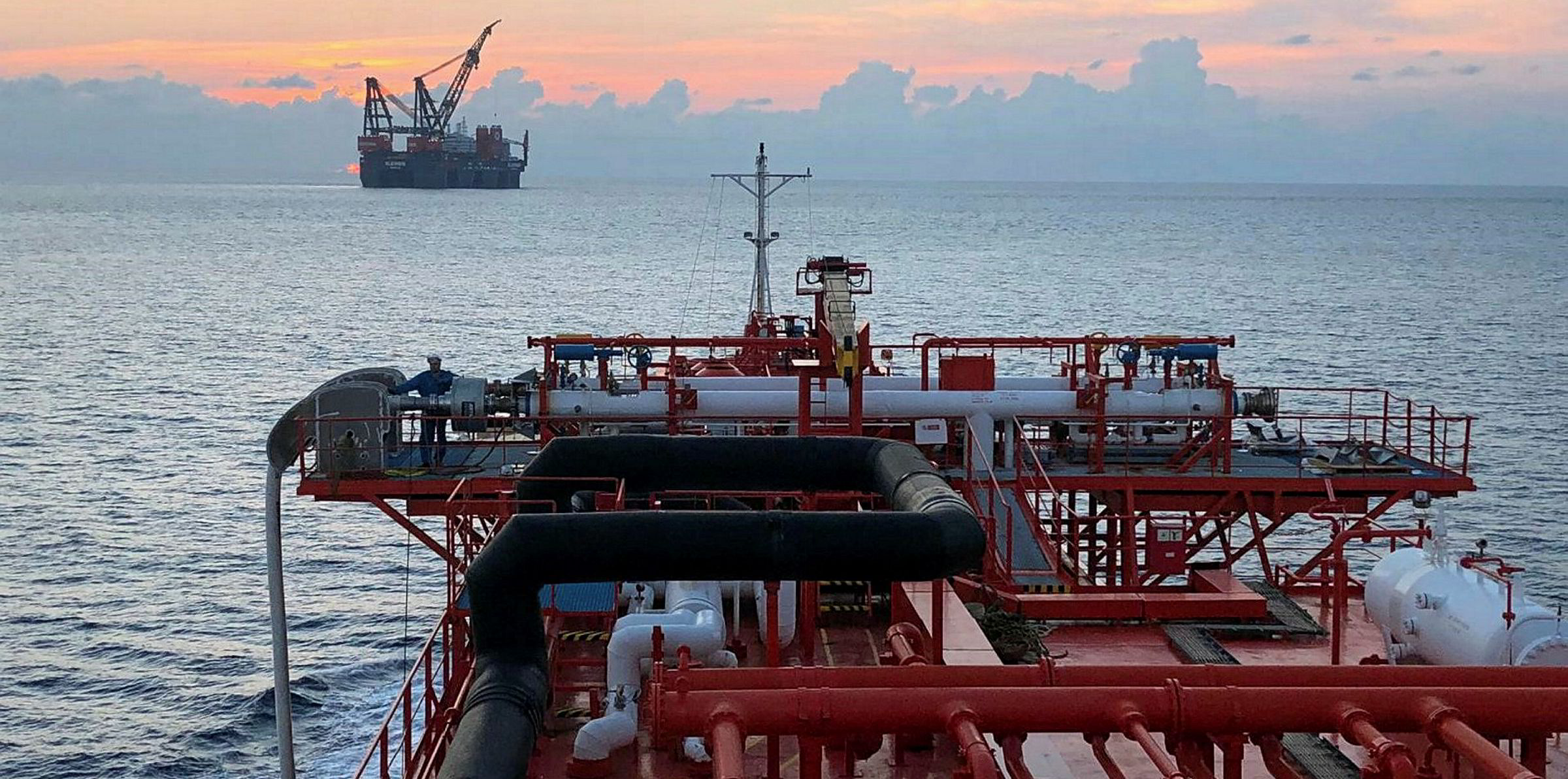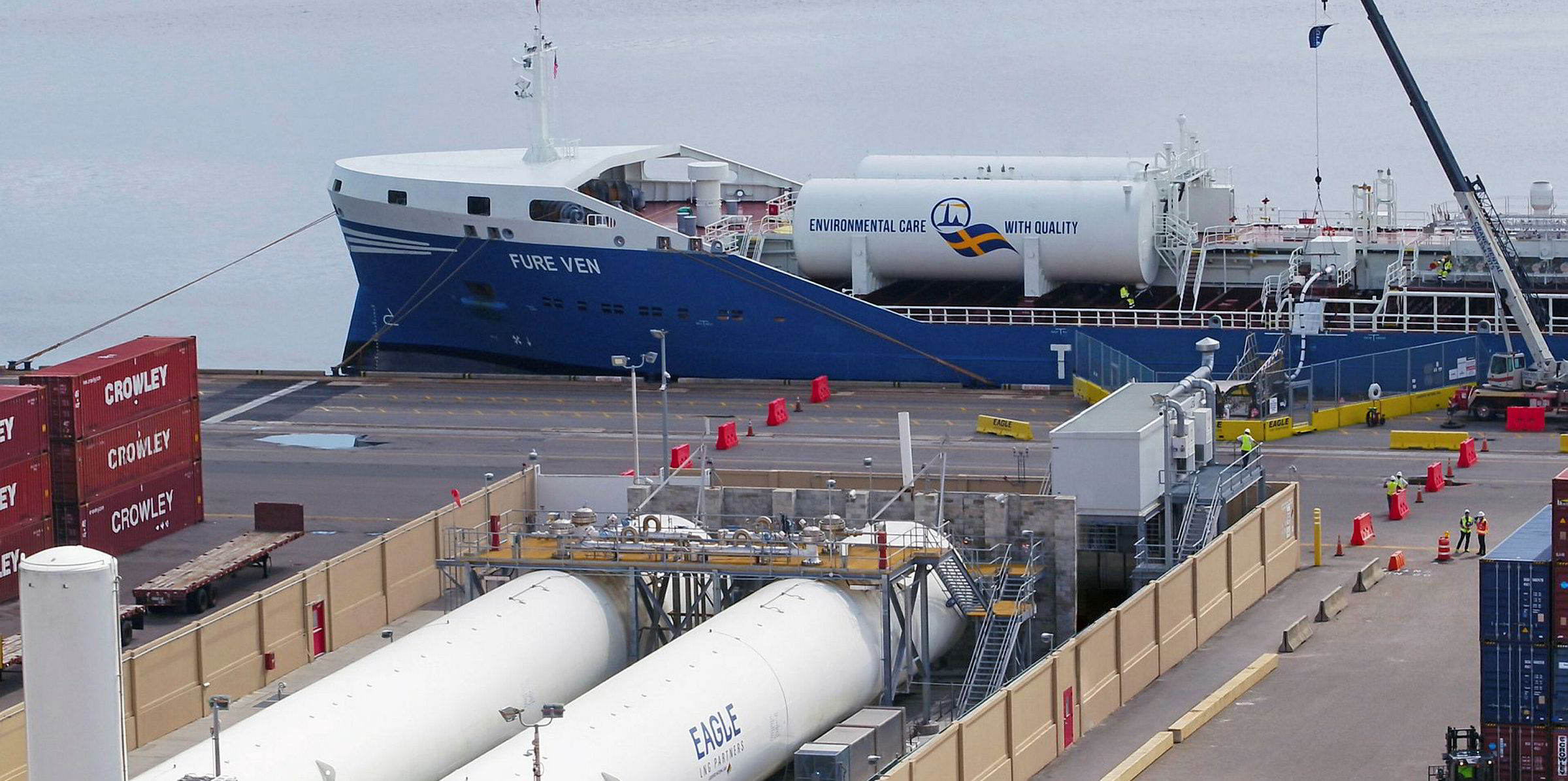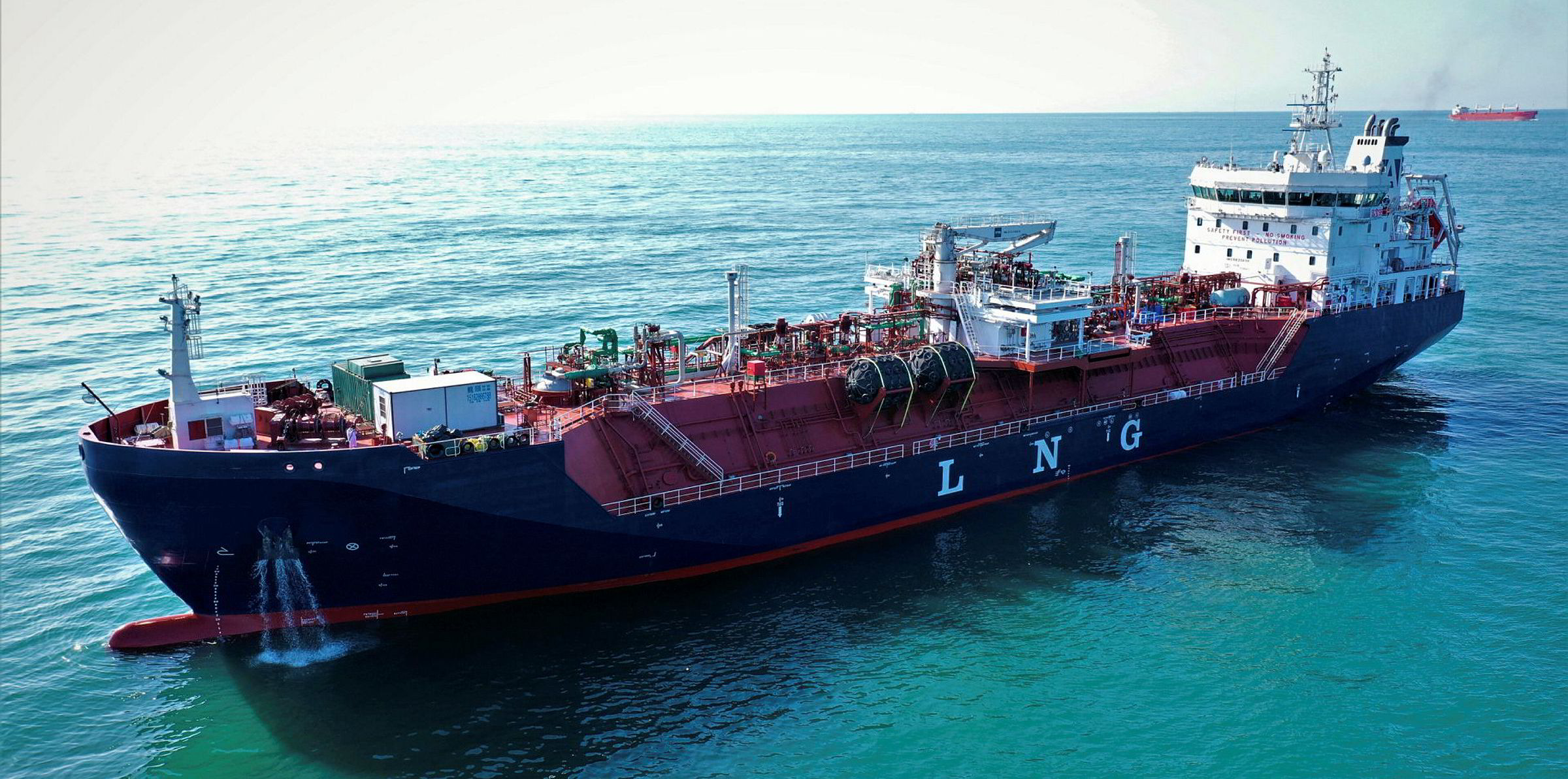More than 100 new LNG bunker vessels (LNGBVs) will be needed in the next 10 years to meet an expected rise in demand for LNG fuelling, according to Singapore’s Pavilion Energy.
Alan Heng, the company's managing director for Asia, said the Singapore gas buyer estimates that LNG bunker demand will rise to just shy of 30 million tonnes per annum by 2030, a 30-fold increase on where it stands today.
Speaking at the Gastech Virtual Summit, he added that Singapore is expected to take a 20% share of this market as a key bunkering hub.
And he revealed that Pavilion — the energy unit of Singapore investment firm Temasek Holdings — is working with partners in Europe and China to build supply alliances to provide a global network.
Europe out in front
Heng detailed that of the 10 LNG bunker vessels currently in operation, with a combined capacity of 0.56 mtpa, nine of these are in Europe.
He said there are a further 16 LNGBVs on order, which will boost supply to 2.2 mtpa in total.
But he added that to meet Pavilion’s 2030 LNG bunkering demand forecast, more than 100 new LNGBVs will be needed capable of supplying a combined 27 mtpa.

The Pavilion manager said Covid-19 had slowed the development of LNG fuelling, with slower growth in shipping and fleet replacement.
But he said the fundamental for LNG as a global fuel remains strong.
Acceleration
Heng said that accelerating the development of LNG fuelling infrastructure is important to give marine customers the confidence they need to use LNG bunkers.
He said there are currently over 60 ports delivering LNG bunker fuel with another 24 proposed. But only 15 of the 60 are capable of delivering LNG by ship-to-ship operations, which he said is the most effective way of supplying oceangoing vessels.
The MD said it will also be important to adapt LNG terminal operations and processes to allow for competitive reloadings
He said marine customers will require small parcels and often a faster response than for a reload of a large LNG cargo.
Flexibility
In addition, there is also a need to adapt LNG commercial agreements for marine bunkering customers requirements, which need more flexibility.
He said Pavilion, which will take on a first 12,000-cbm LNGBV in Singapore next year, has had to be more creative about how it prices its contracts and structures its contracts.
The company is currently working towards standard terms and conditions to make contracting easier, he said.
“This is about two sides finding common ground to arrive at workable solutions in a new business area,” Heng said.
“These are work in progress issues and would go a long way towards removing any obstacles for LNG contracting and for LNG to be adopted by shipowners.”
He said LNG represents the most viable fuel for shipping to reduce its carbon footprint.
“Despite the setbacks of the Covid-19 pandemic had created, Pavilion Energy believes that this decarbonisation efforts with LNG can and should begin as soon as is practicable,” he said.







